Splendid Birds With Hair, A diverse array of avian wonders graces our world, each adorned with intricate plumage that seems to defy conventional avian norms.
When one thinks of birds, feathers typically come to mind, but in the avian realm, a distinct group of species stands out for sporting what can only be described as “hair.”
From the elegant tufts of the Tufted Puffin to the striking crests of the Sulphur-crested Cockatoo, these 15 splendid birds defy traditional expectations, captivating observers with their unique and often flamboyant hairstyles.
As we delve into the lifestyles of these remarkable creatures, a fascinating narrative unfolds, each bird’s “hair” serving a purpose beyond mere adornment.
Join us on a journey through the skies as we explore the vibrant and diverse world of birds with hair, and ecological roles that make each feathered protagonist a splendid spectacle in the grand tapestry of nature. Stay sharp.
15 Splendid Birds With Hair
In the avian realm, each feathered inhabitant brings a unique story to the skies. From the secretive Bearded Reedling weaving through reeds to the majestic Philippine Eagle reigning over treetops, these remarkable birds captivate with their diverse forms and behaviors.
Embark on a journey through the avian wonders, where every flutter unfolds a captivating narrative.
1. Tufted Puffin
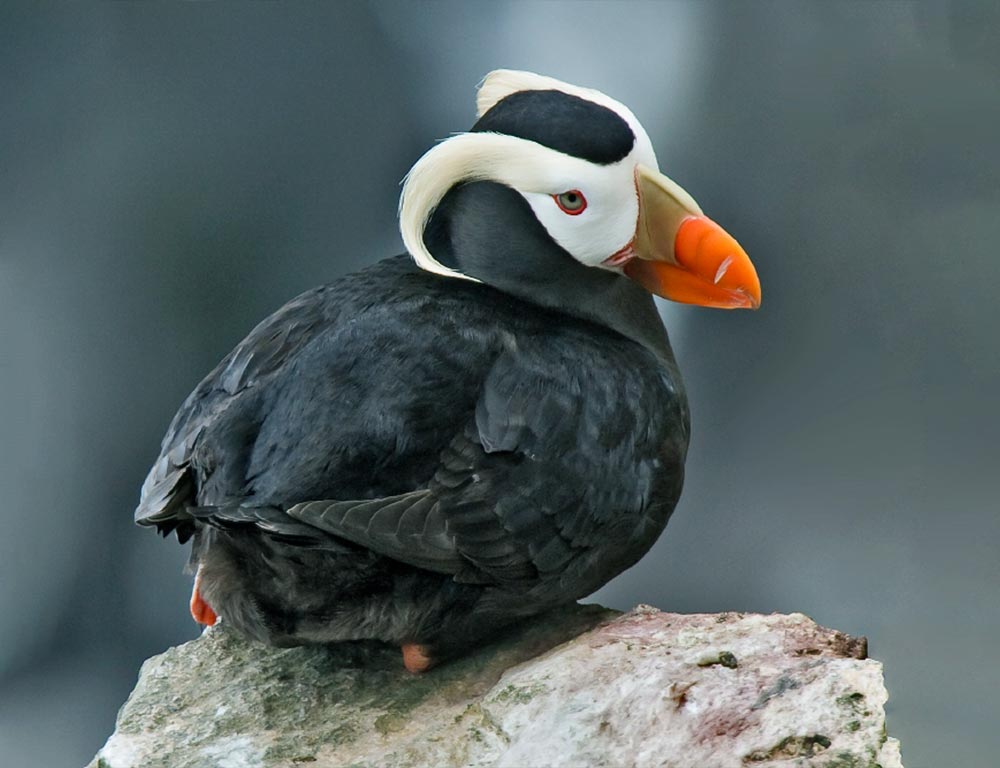
- Scientific name: Fratercula cirrhata
- Population: Approximately 3 million
- Life span: Up to 20 years
- Size: 13-16 inches
- Weight: 1-2 pounds
- Wingspan: 20-25 inches
The Tufted Puffin thrives in the North Pacific, nesting in colonies along coastal cliffs.
These birds, known for their distinctive tufted crests, have a vibrant lifestyle.
They are skilled divers and agile fliers, catching fish and small invertebrates to sustain their diet.
Puffins exhibit strong social bonds within colonies and engage in elaborate courtship displays, often presenting gifts like pebbles to their mates.
2. Victoria Crowned Pigeon

- Scientific name: Goura Victoria
- Population: Estimated around 5,000 to 10,000
- Life span: Up to 15 years
- Size: 29-33 inches
- Weight: 5-7 pounds
- Wingspan: N/A
Native to Papua New Guinea, the Victoria Crowned Pigeon is a stunning and relatively large species of pigeon.
These birds inhabit dense lowland forests and display a unique ground-dwelling lifestyle.
With a preference for fruits and seeds, their vibrant blue plumage and elegant crests make them captivating inhabitants of their tropical habitat.
3. Eurasian Hoopoe

- Scientific name: Upupa epops
- Population: Widespread and not globally threatened
- Life span: 3-4 years
- Size: 10-12 inches
- Weight: 1.6-3.5 ounces
- Wingspan: 17-18 inches
The Eurasian Hoopoe, recognized for its distinctive “crown” of feathers, is a migratory bird found in Europe, Asia, and North Africa.
Hoopoes forage for insects with their long, slender bills, often using their crests to engage in intricate courtship displays.
These adaptable birds thrive in various habitats, including woodlands, savannas, and urban areas.
4. Grey-crowned Crane

- Scientific name: Balearica regulorum
- Population: Estimated at 58,000 individuals
- Life span: 25-30 years
- Size: 3.3-3.6 feet
- Weight: 7-10 pounds
- Wingspan: 6.6-7.5 feet
Native to Africa, the Grey-crowned Crane is a majestic bird known for its striking golden crown of feathers.
These cranes inhabit wetlands, grasslands, and cultivated areas. With an omnivorous diet, they feed on seeds, insects, and small vertebrates.
Known for their elaborate courtship dances, Grey-crowned Cranes form monogamous pairs and engage in impressive displays involving head bobbing and leaping.
5. Crested Partridge

- Scientific name: Rollulus rouloul
- Population: Numbers not precisely estimated
- Life span: 5-7 years
- Size: 12-14 inches
- Weight: 1-1.5 pounds
- Wingspan: N/A
The Crested Partridge, found in Southeast Asia, resides in dense forests and feeds on a diet consisting of seeds, fruits, and insects.
These ground-dwelling birds are known for their distinctive crest and vibrant plumage.
With a social nature, they often forage in pairs or small groups, communicating through soft calls.
They skillfully navigate the forest floor, using their well-adapted legs to maneuver through the underbrush.
6. Sulphur-crested Cockatoo
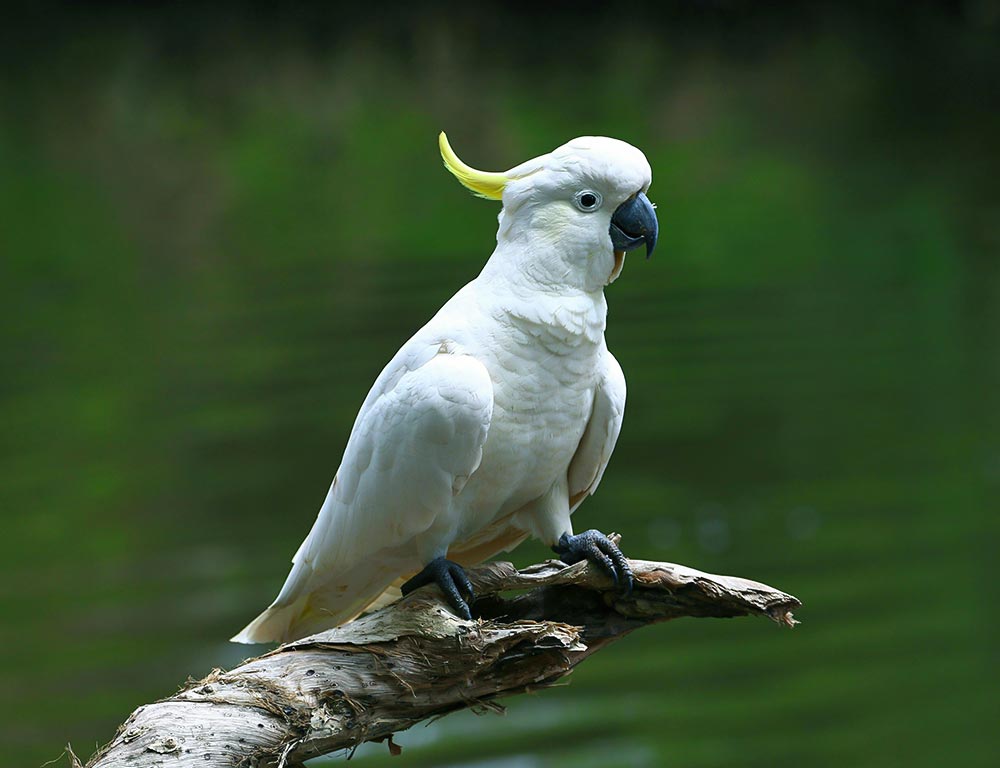
- Scientific name: Cacatua galerita
- Population: Common and widespread
- Life span: 70+ years
- Size: 17-20 inches
- Weight: 1.5-2.9 pounds
- Wingspan: 30-35 inches
Native to Australia, Sulphur-crested Cockatoos are iconic for their striking yellow crests and white plumage.
These highly intelligent birds are social and often found in large flocks. They display excellent vocal mimicry and problem-solving abilities.
With a diverse diet including seeds, fruits, and insects, they have adapted well to urban environments, though their wild populations face habitat threats.
7. Dalmatian Pelican

- Scientific name: Pelecanus crispus
- Population: Estimated around 6,000 to 12,000
- Life span: Up to 20 years
- Size: 5.5-6.6 feet
- Weight: 11-33 pounds
- Wingspan: 9-11 feet
The Dalmatian Pelican, with its impressive wingspan, is one of the largest pelican species. Inhabiting wetlands in Europe and Asia, they primarily consume fish, utilizing their large bills for efficient hunting.
These pelicans are known for their distinctive breeding plumage, marked by curly nape feathers. Despite their size, they are agile fliers and often engage in communal fishing, herding fish into shallow waters.
8. Southern Crested Guineafowl

- Scientific name: Guttera edouardi
- Population: Population estimates are not precise
- Life span: Up to 12 years
- Size: 22-28 inches
- Weight: 2-3 pounds
- Wingspan: N/A
Endemic to southern Africa, the Southern Crested Guineafowl is characterized by its striking black and white plumage and a unique helmet-like crest.
These birds inhabit grasslands and woodlands, foraging for seeds, fruits, and insects. They are social birds, often seen in small groups or larger flocks.
The crested guineafowl engage in a variety of vocalizations, including loud calls that serve as communication signals within the group.
9. Bearded Vulture

- Scientific name: Gypaetus barbatus
- Population: Estimated around 10,000 individuals
- Life span: Up to 45 years
- Size: 3.3-4.3 feet
- Weight: 13-18 pounds
- Wingspan: 7-9 feet
The Bearded Vulture, also known as the Lammergeier, is a large vulture found in mountainous regions across Europe, Asia, and Africa.
Known for their unique diet of bone marrow, they are capable of dropping bones from heights to access the nutritious content.
With a distinctive bearded appearance and impressive soaring abilities, these vultures play a crucial role in the ecosystems by aiding in the decomposition of carcasses and preventing the spread of diseases.
10. Bearded Reedling
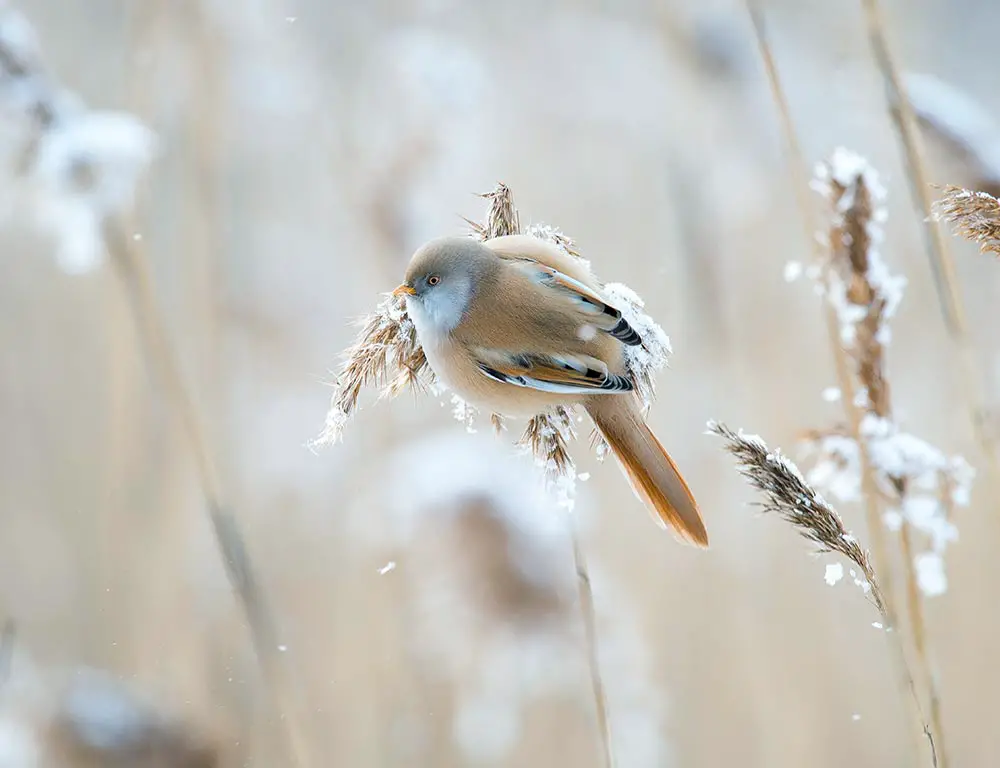
- Scientific name: Panurus biarmicus
- Population: Estimated several million
- Life span: 2-3 years
- Size: 5.1-6.3 inches
- Weight: 0.6-0.9 ounces
- Wingspan: 7.9-9.8 inches
The Bearded Reedling, also known as the Bearded Tit, is a small bird found in wetlands across Europe and Asia. With a distinctively long tail and, in males, a “moustache” of black feathers, they navigate reed beds and marshes.
These birds primarily feed on insects and seeds, showcasing agile movements through dense vegetation.
Bearded Reedlings are known for their sociable nature, forming small flocks during the non-breeding season.
11. Philippine Eagle
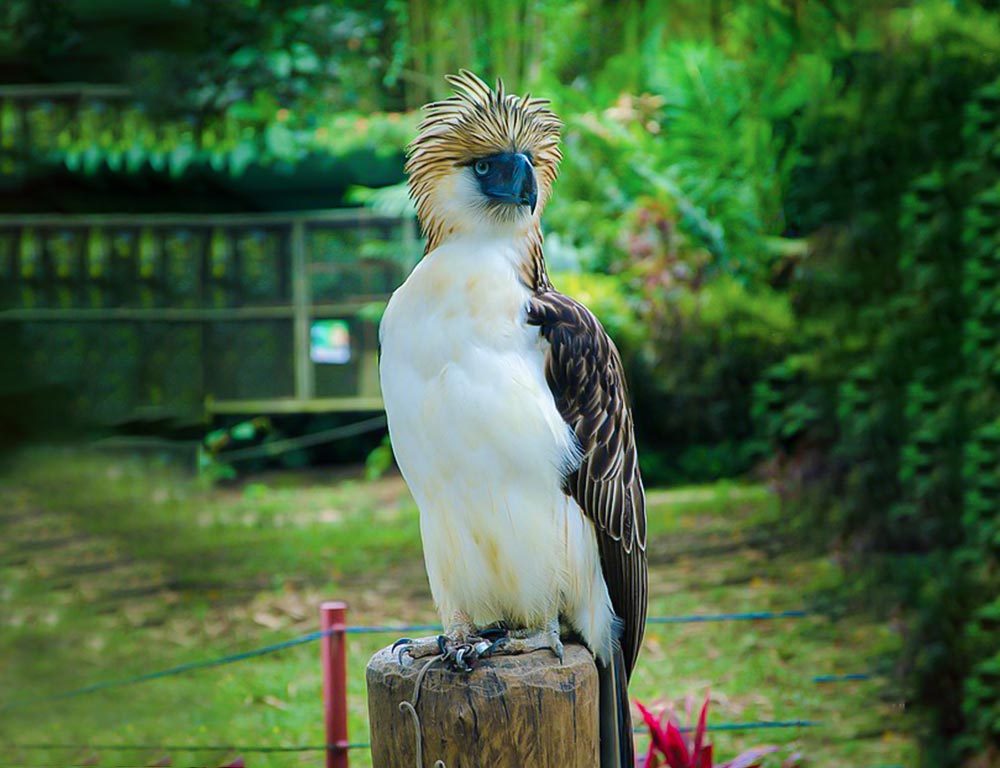
- Scientific name: Pithecophaga jefferyi
- Population: Estimated around 400 pairs
- Life span: Up to 40 years
- Size: 3.3 feet
- Weight: 8-18 pounds
- Wingspan: 6.7 feet
The Philippine Eagle, also known as the Monkey-eating Eagle, is one of the world’s largest eagles and is endemic to the Philippines.
With its striking appearance and powerful build, it is a formidable predator in the rainforest.
These eagles are known for their solitary habits, requiring large territories for hunting and nesting.
Threatened by habitat loss and hunting, conservation efforts are crucial to preserving this critically endangered species.
12. Bearded Wood Partridge
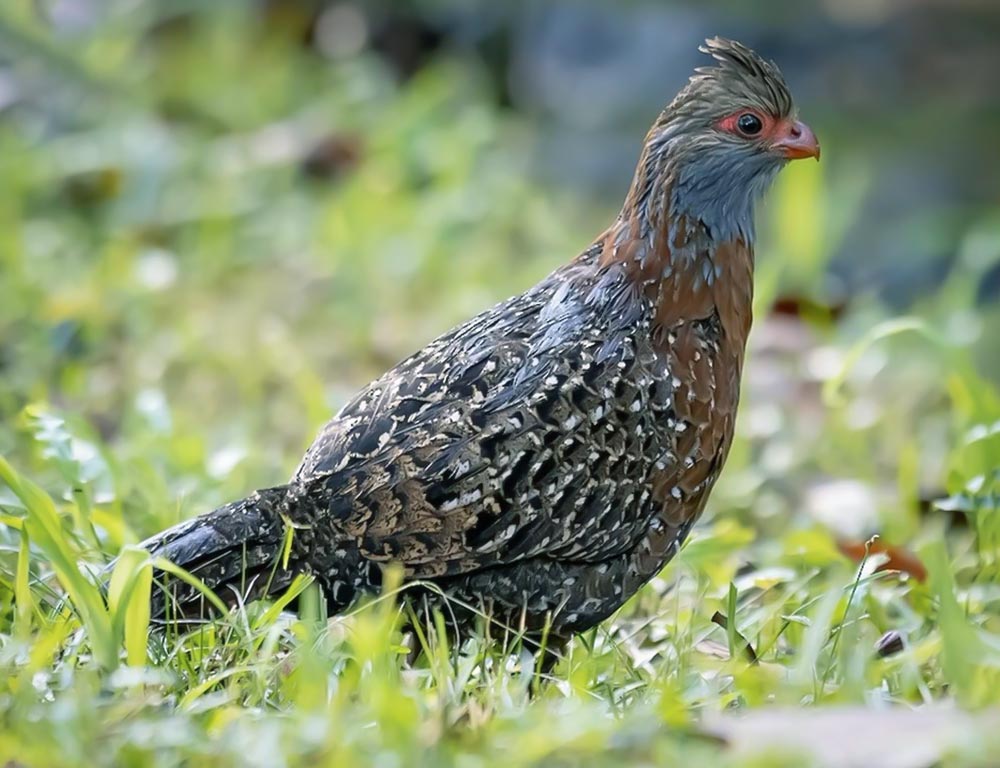
- Scientific name: Dendrortyx barbatus
- Population: Population estimates are not precise
- Life span: Up to 6 years
- Size: 10-12 inches
- Weight: 11-14 ounces
- Wingspan: N/A
Endemic to Mexico, the Bearded Wood Partridge is characterized by its distinctive black facial beard and intricate brown and black plumage.
Inhabiting subtropical and tropical montane forests, these partridges are primarily ground-dwellers, foraging for seeds, fruits, and insects.
Their elusive nature and preference for dense vegetation make them a challenge to observe in the wild.
13. Demoiselle Crane

- Scientific name: Anthropoides virgo
- Population: Estimated around 270,000
- Life span: Up to 20 years
- Size: 3.3-3.9 feet
- Weight: 4.4-6.6 pounds
- Wingspan: 6.2-7.2 feet
The Demoiselle Crane is a migratory bird found in Central Asia, traveling long distances between breeding and wintering grounds.
Recognizable by its elegant appearance and blue-gray plumage, these cranes form large flocks during migration.
They exhibit elaborate courtship displays, including dancing and calling, and are known for their harmonious aerial formations.
14. Smew (Mergellus albellus)

- Scientific name: Mergellus albellus
- Population: Estimated several hundred thousand
- Life span: Up to 10 years
- Size: 15-17 inches
- Weight: 1-2 pounds
- Wingspan: 23-26 inches
The Smew is a striking duck species found in freshwater habitats across Europe and Asia.
With its black and white plumage and “panda-like” face, the male Smew is particularly distinctive. These ducks are skilled divers, feeding on fish and aquatic invertebrates.
During the breeding season, they choose nesting sites in tree cavities. Despite being relatively widespread, conservation efforts focus on preserving their habitats and addressing potential threats.
15. Bearded Guan

- Scientific name: Penelope barbata
- Population: Population estimates are not precise
- Life span: Up to 15 years
- Size: 25-27 inches
- Weight: 3-4 pounds
- Wingspan: N/A
Found in the montane forests of Central and South America, the Bearded Guan is recognized for its distinctive facial “beard” of feathers.
These arboreal birds primarily feed on fruits, seeds, and insects, using their strong bills to extract food from various vegetation.
Bearded Guans are known for their elusive behavior, often staying high in the forest canopy. Conservation efforts are crucial to protect their habitats, which are threatened by deforestation.
Wrapping Up
In the symphony of nature, these splendid birds with hair showcase the diversity of avian life.
From the vibrant plumage of the Victoria Crowned Pigeon to the majestic flight of the Bearded Vulture, each species brings a unique charm.
The lifestyle narratives of these birds, from courtship rituals to foraging habits, paint a vivid portrait of their existence.
As stewards of our planet, understanding and appreciating the intricacies of these magnificent creatures is essential for conservation.
Let the wings of knowledge carry you through this avian odyssey, where every feathered protagonist tells a tale of resilience, adaptation, and the delicate balance of the natural world. Thank you so much.